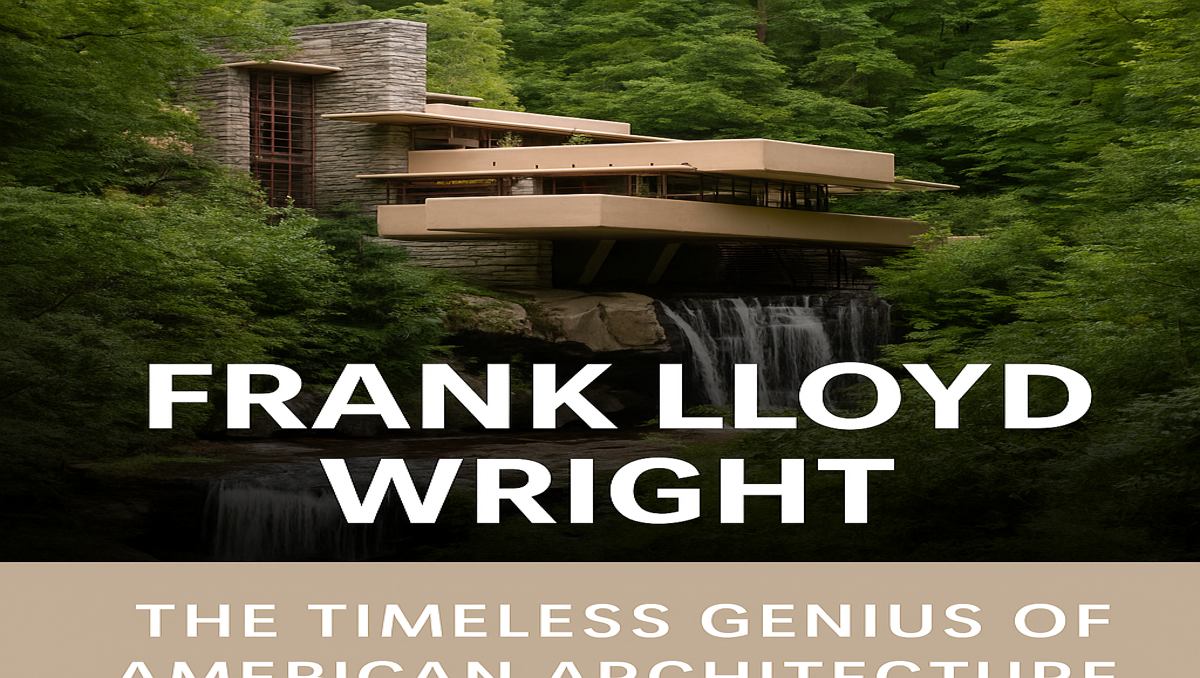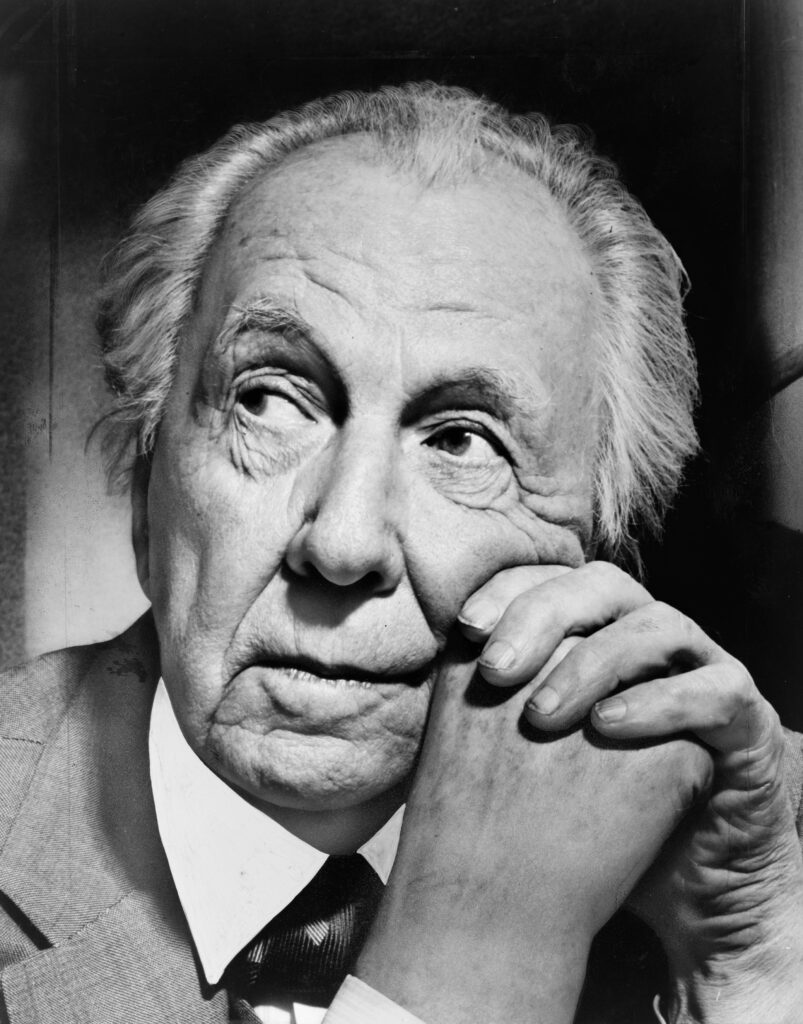Frank Lloyd Wright: Genius of American Architecture

Discover the legacy of Frank Lloyd Wright, the visionary American architect who revolutionized modern design through organic architecture and iconic structures like Falling water and the Guggenheim Museums.
Who Was Frank Lloyd Wright?

Frank Lloyd Wright (1867–1959) was one of the most influential architects in history, known for his groundbreaking approach to design that blended innovation, harmony with nature, and American individualism. His works redefined architecture in the 20th century and continue to inspire generations of architects today.
The Concept of Organic Architecture
Wright pioneered the philosophy of organic architecture — the idea that buildings should be in harmony with their environment. Rather than dominating nature, his structures embraced natural forms, local materials, and flowing interior spaces that merged seamlessly with the outdoors.
Key Principles of Organic Architecture:
- Integration with the landscape
- Use of natural materials
- Open floor plans
- Respect for the site’s natural beauty
Iconic Works of Frank Lloyd Wright
1. Fallingwater (1935) – Pennsylvania, USA
A masterpiece that literally blends into a waterfall, Fallingwater is the perfect example of Wright’s organic design philosophy. The house appears to grow out of the rocks, with cantilevered terraces hovering over the stream below.
2. The Guggenheim Museum (1959) – New York City
This iconic spiral-shaped museum broke all traditional architectural norms. Wright’s vision turned the museum into a sculpture in motion, inviting visitors on a continuous path from top to bottom.
3. Taliesin and Taliesin West
These were Wright’s personal homes and studios, serving as laboratories for his architectural experiments. Taliesin in Wisconsin and Taliesin West in Arizona also became the heart of his architecture school.
4. Robie House (1910) – Chicago, USA
A prime example of the Prairie Style, the Robie House features strong horizontal lines, overhanging eaves, and a deep connection to the American Midwest landscape.
Frank Lloyd Wright’s Influence on Modern Architecture
Wright designed over 1,000 structures, more than 500 of which were completed. He challenged the rigid conventions of architecture and laid the groundwork for modern design movements including minimalism, open-plan living, and biophilic design.
His ideas were decades ahead of his time, especially in promoting:
- Sustainable building practices
- Energy efficiency through passive design
- Integration of interior and exterior spaces
Legacy and Recognition
Frank Lloyd Wright’s architectural philosophy continues to influence both residential and commercial design. In 2019, eight of his buildings were inscribed on the UNESCO World Heritage List, recognizing their cultural and historical significance.
He also founded the Frank Lloyd Wright Foundation, which continues his educational mission and preservation work.
Why Frank Lloyd Wright Still Matters in 2025
As the world focuses more on sustainability, nature-inspired living, and climate-resilient design, Wright’s vision feels more relevant than ever. Architects today revisit his work to find inspiration in timeless principles that respect both form and function.
Frank Lloyd Wright was not just an architect — he was a thinker, a rebel, and a pioneer. His innovative ideas continue to shape the world of design, reminding us that great architecture is not just about buildings, but about the experience of space, light, and life itself.



